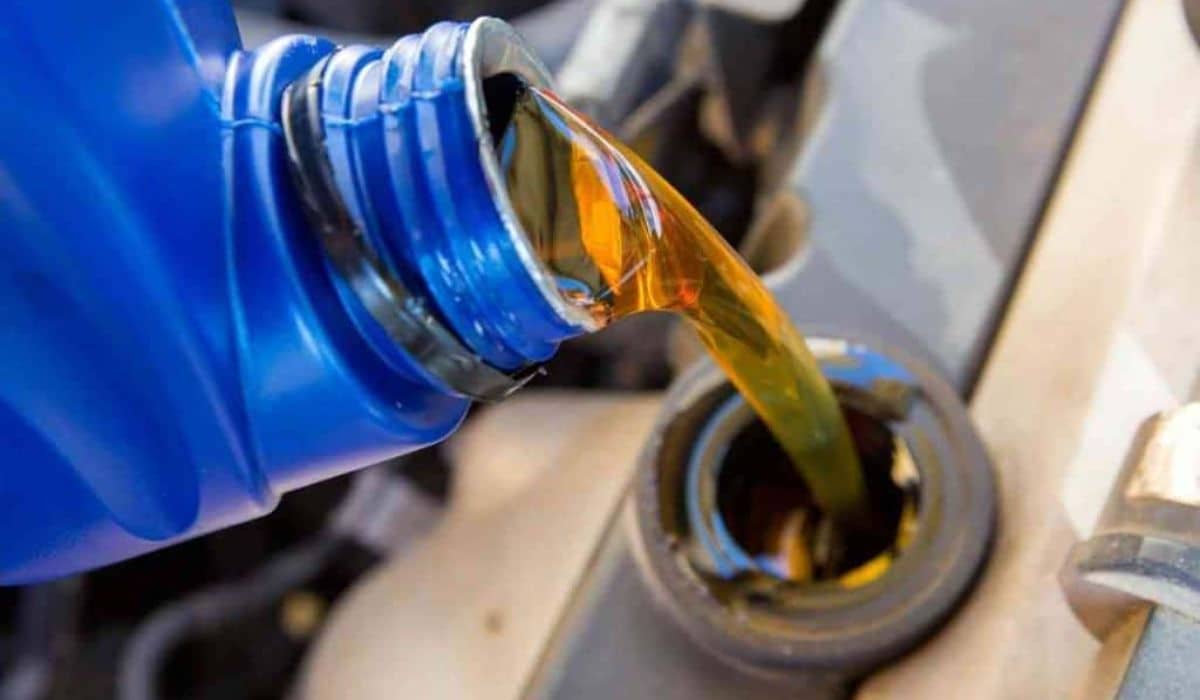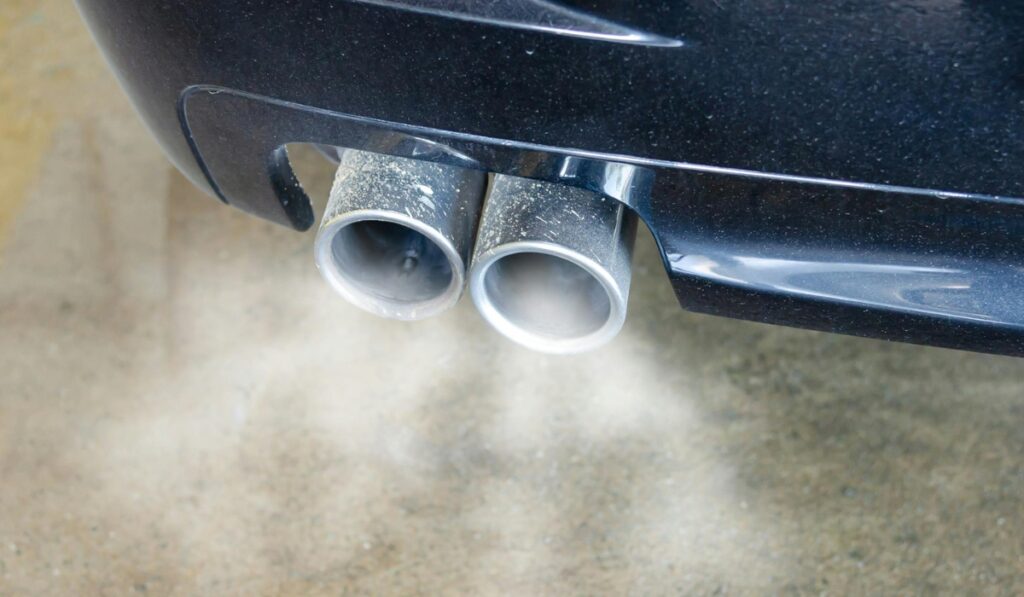Many people wonder if you can mix 5w20 and 5w30 motor oil. Engines require specific oil grades for proper lubrication, but what happens when two different weights or viscosities of oil get blended together?
This comprehensive blog post takes an in-depth look at can you mix 5w20 and 5w30 and whether combining 5w20 and 5w30 engine oil is advisable for your vehicle.
| Topic | Information |
|---|---|
| Can You Mix 5w20 and 5w30 Oil? | Examines the possibility and consequences of mixing different oil viscosities (5w20 and 5w30) in an engine. |
| Motor Oil Numbers and Grades | Explains the significance of numbers and letters denoting oil viscosity grades, providing crucial context. |
| Reasons for Mixing Motor Oils | Discusses common scenarios leading to unintentional oil viscosity blending and the motivations behind it. |
| Risks of Combining 5w20 and 5w30 | Analyzes potential issues, including compromised internal clearances, changes in cold and hot viscosity, and more. |
| Expert Opinions on Mixing Grades | Highlights advice from automotive manufacturers, certified mechanics, and industry groups against mixing oil grades. |
| Situations Where Mixing is Tolerated | Acknowledges realistic scenarios where short-term blending may occur and evaluates relative risks. |
| How to Fix an Oil Viscosity Mixup | Provides steps recommended by experts to rectify improper oil blends and prevent future mixing. |
What Do Motor Oil Numbers and Grades Mean?
To fully grasp if mixing different oil grades leads to problems, we first need to cover what the numbers and letters denoting oil viscosity grades signify. This background gives crucial context for later analysis.
• The “5” refers to the cold cranking viscosity, which signals how well the oil flows at low temperatures when the engine is first started in cold weather and the oil is thick.
The lower this leading number, the thinner the oil is at lower cold temperatures. This helps with oil circulation immediately after cold starts.
• The “w” stands for “winter’, signaling that the oil viscosity grade is intended for winter or cold weather use.
• The second number after the “w” depicts the viscosity grade of the oil at high engine operating temperatures. A higher second number designates thicker oil consistency when hot at around 212 degrees Fahrenheit inside a running motor.
So, a 5w20 oil will flow better than a slightly thicker 5w30 oil in cold winter temperatures, but a 5w30 will maintain a little more viscosity protection at hot expanded engine temperatures.
Auto manufacturers design engines and specify oil grades to balance cold weather starting flow and engine component protection when the motor is running hot. The goal is balancing performance across cold and hot extremes.
Why Might Someone Mix Different Viscosity Motor Oils?
There are a few common situations that could inadvertently lead to two different viscosity grades of motor oil getting mixed together in an engine:
· Getting the incorrect viscosity grade of oil by accident during an oil change service. This may happen when an oil change shop technician grabs the wrong viscosity jug off the shelf. Or if the vehicle make/model is entered incorrectly into their system specifying the wrong oil.
· Topping off low oil yourself between changes with a different viscosity oil that happens to be available.
Many drivers have extra oil jugs around their garage, which likely don’t match manufacturer specs. When an engine is a little low between changes, there’s temptation to top it off with whatever’s on hand.
· Not realizing oil viscosity grades shouldn’t be mixed and assuming any motor oil grade works fine.
With heavy marketing about “high mileage” or “advanced performance” oil, the importance of grades gets lost. Plenty of drivers believe all marketed engine oils are basically compatible.
· Attempting to create a blended “best of both worlds” oil viscosity. Some think mixing thinner and thicker grades gives protection across driving conditions. These folks assume they know better than automakers what oil viscosity is optimal.
So, whether it’s lack of awareness on the importance of viscosity grades, an honest mistake topping off with whatever oil is handy, or intentional blending trying to outsmart manufacturer specifications, many engines end up with blended oil.
Next, we’ll analyze expert opinions on the risks and downsides of crossing viscosity grades.
What Could Potentially Go Wrong with Combining 5w20 and 5w30 Oils?
Given the background on what motor oil viscosity grades mean, what specifically goes wrong when incompatible grades like 5w20 and 5w30 get blended together? Here’s an in-depth look at potential downsides mixing these grades posed by experts:
• The resulting blended viscosity moves away from what the engine is precisely designed for, compromising carefully engineered internal clearances.
Bearings, piston rings, gaskets – all have tight tolerances assuming a precise oil grade. Off-spec oil can start leaking past seals not intended for that viscosity.
• Cold cranking viscosity changes with blends, risking sluggish oil circulation on frigid winter cold starts. Oil pumps assume a specific grade will flow as engineered. Thicker blends may strain starters trying to crank thickened oil.
• Friction reducing and anti-wear additive packages are thrown off-balance. Dispersant, detergent, antioxidant mixes are engineered for specific grades. Compromised additives can’t protect against wear and deposits as designed.
• In extreme cases with severe grade mixing, viscosity improvers can drop out of solution and gel up. Polymers that help oil flow can unravel when grades blend too far. Gelled oil can’t circulate and leads to catastrophic failure.
On the whole, blending 5w20 and 5w30 takes the lubricant away from both its cold flow design point and hot viscosity protection spec, deviating significantly from the precise balance vehicle manufacturers intend.
Many finely calibrated tolerances inside engines hinge on the proper oil grade. Even small deviations risk gradually enlarging clearances.
Why Do Experts Strongly Advise Sticking to a Single Oil Viscosity Grade?
Given the compromises and risks outlined of blending different motor oil viscosity grades compared to maintaining a consistent oil grade, mainstream expert opinion from multiple facets of the automotive industry universally advocates against mixing grades.
Here is specific guidance from various trusted experts against deviating from manufacturer oil grade recommendations:
• Automotive manufacturers (OEMs) say oil grades should be checked at every fill up and only topped off with the exact same viscosity grade.
Engineer designed capacities and clearances are calibrated around the precise grade. Even minor mixing risks moving outside tolerances over time.
• Certified mechanics strongly advise car owners should always follow the vehicle manufacturer engine oil grade recommendations.
Many engines nowadays have very tight tolerances that demand precise specs. Mechanics warn against owners second guessing automaker engineering.
• Industry groups like the American Petroleum Institute advocate oil consumers should adhere closely to all new oil fill instructions. API sets quality standards for proper testing that grades must pass. Deviating from certified specs questions an oil’s legitimacy.
Whether an OEM auto manufacturer building engines, mechanic servicing them, or industry body oversight group, trusted authorities in engines and lubricants universally point to the safest practice being obeying new oil fill viscosity and grade requirements detailed in each vehicle’s manual by the manufacturer.
Introducing off-spec blends goes against broad expert guidance and brings uncertainties in optimal performance and protection.
Situations Where Mixed Viscosity Oil Might be Temporarily Tolerated.
While avoiding blending incompatible motor oil grades altogether is certainly ideal, there are some realistic world situations where it inadvertently occurs temporarily:
• Quick top off with slightly different viscosity grade already on-hand to fix an immediately low dipstick reading. This often happens when an engine is burning or leaking a little oil. Drivers top up with whatever oil they have handy to prevent damage.
• Getting the wrong oil grade filled by the oil change shop accidentally. With many viscosity grades, busy shops can grab the wrong jug by mistake. Customer vehicles can also get mis-entered into their computer systems.
• Not understanding oil viscosity grades shouldn’t mix and assuming any oil works fine. With so many types like conventional, synthetic, high mileage – the importance of grades gets lost. Plenty of drivers believe all marketed engine oils are compatible.
• Attempting to create a blended “best of both worlds” oil viscosity. Some drivers think mixing thinner and thicker grades gives better protection. These folks falsely assume they know better than vehicle manufacturer engineers.
In these situations where incompatible grades like 5w20 and 5w30 get blended short term, here is how industry experts view the relative risks:
• A quick once-off top-off likely poses little risk short term in most engines.
• An oil change shop screwup should be remedied back to OEM specs promptly.
• Prolonged and repeated blending risks gradual internal engine damage over time.
So, while the “once won’t ruin an engine” mentality has some truth initially, the longer and more significantly viscosity deviates from specifications, risks start accumulating according to experts.
How to Fix an Oil Viscosity Mixup?
If discovering an improper blend of motor oil grades like 5w20 and 5w30 in your vehicle, here are the recommended steps per the experts to get back on track:
1. Verify the specific oil viscosity grade recommended for your exact engine in the vehicle owner’s manual.
2. Schedule an oil change right away, explicitly specifying installing the proper oil grade.
3. Continue requesting the correct viscosity grade for all future oil changes.
Doing a full drain and refill with new oil is the only way to totally purge the improper blend and restore the intended oil grade engineered for your engine specifications.
Sticking religiously to the manufacturer’s viscosity recommendations going forward then avoids any suboptimal blending situations.
FAQ
Can We Mix 5w20 And 5w30 Motor Oil In My Car?
Although technically conceivable, mixing these oil grades is not recommended. Motor oil viscosity is vital to engine lubrication. Mixing 5w20 and 5w30 lubricants may affect engine tolerances, causing problems.
What Do Motor Oil Grade Numbers And Letters Mean?
The numbers and letters in motor oil grades indicate viscosity. The “5” represents cold cranking viscosity, the “w” winter use, and the second number high engine temperature. These requirements are essential for engine performance and safety.
Why Might Someone Accidentally Mix Motor Oils With Various Viscosities?
Accidentally mixing oil grades during an oil change, topping off oil between changes with whatever is available, or not understanding viscosity grades can happen. When making a unique blend to have the best of both worlds, it can happen.
What May Go Wrong Mixing 5w20 And 5w30 Oils?
Combining these oils can damage internal clearances, slow oil circulation in cold weather, imbalance friction-reducing compounds, and, in severe circumstances, viscosity improvers slipping out of solution and triggering catastrophic failure. It’s far from vehicle manufacturers’ ideal equilibrium.
Can My Engine Accept Mixed Viscosity Oil Temporarily?
Short-term mixing, such as a brief top-off or an oil change shop error, may be OK, but frequent blending might damage the engine. Viscosity mix must be addressed immediately by arranging an oil change using the manufacturer’s suggested oil grade.
Key Takeaways
In closing this deep dive on whether mixing motor oil grades is sound, here are the key takeaways:
• Oil viscosity grades are carefully engineered to balance cold cranking flow and hot engine protection.
• Introducing off-spec blends can alter viscosities outside of specifications.
• Additive formulations may not blend properly either when mixed.
• Most experts advise against crossing oil viscosity grades.
• Sticking closely to OEM recommendations is universally the safest bet.
• Fixing blended oil promptly limits risks of any damage.
The consensus of mechanics and industry authorities is maintaining manufacturer specified viscosity grades gives an engine properly balanced lubrication across temperature extremes.
While a quick top off in a bind may pose little risk, repeated and deliberate oil grade blending long term threatens gradual engine damage from compromised lubrication.





